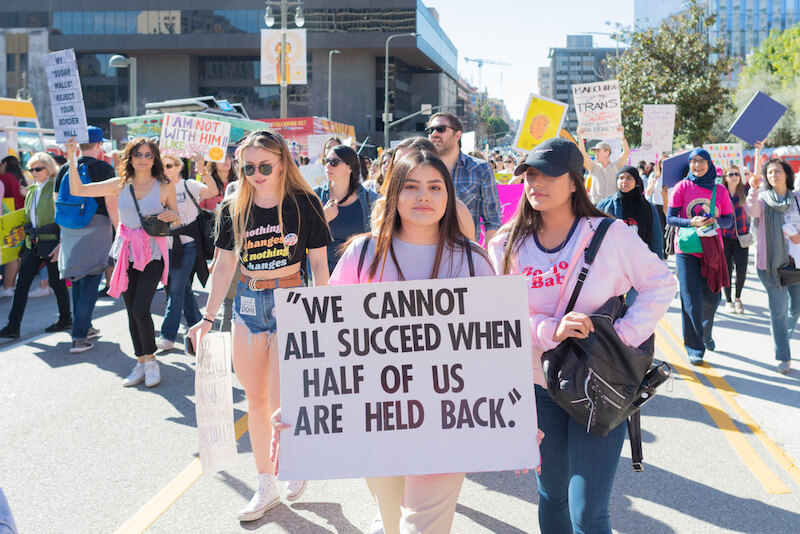When women unite, they can make change happen
The Alberta election has come and gone. Two powerful women engaged in a closely fought battle, guaranteeing a woman premier no matter which party triumphed. Still, all-women contests in provincial elections are the exception, not the norm. Canada is falling further behind when it comes to women in politics, particularly in federal elections.
Canada ranks a pitiful 61st globally for women in parliament, far behind countries in Europe, Latin America and Africa. How did we end up here?
Canadian women campaigned for the right to vote over more than three decades. Activists began organizing in 1876 but didn’t win voting rights until 1918. Indigenous people would wait several more decades.
Hard work and creativity were key. Women established provincial and national suffragist organizations. They gathered signatures on petitions. They staged mock parliaments to demonstrate their political knowledge and debate skills. And they were opposed and scorned at every turn.
But revisiting the suffragists’ playbook to demand parity in political representation might be a good idea. It’s been more than 100 years since Agnes Macphail became the first woman to be elected to parliament. Yet men still hold 70 per cent of seats in the House of Commons.
This underrepresentation matters, because when women hold political power, governments are much more likely to develop policies and prioritize spending on issues that affect them.
Consider that feminist organizing and lobbying ensured that gender equality was enshrined in the 1982 Charter of Rights and Freedoms. But having guarantees on paper was not enough.
Women also staged multiple protest marches to gain full reproductive rights and to call public attention to the ongoing problem of violence against women, including missing and murdered Indigenous girls and women.
The lesson keeps repeating itself: change doesn’t just happen. Those with political power don’t easily concede the needs or perspectives of those who are not represented.
Change happens when advocates mobilize others to join campaigns that call public — and then politicians’ — attention to problems of injustice, insecurity and inequality.
Other countries offer inspiration too.
In 1975, the women of Iceland went on strike. Instead of going to work or tending to their families, they took to the streets, paralyzing the country. Within a year, the government adopted the Gender Equality Act. Iceland has ranked number one in the world on gender equality for more than a dozen years.
More recently, on International Women’s Day in 2018, five million Spanish women workers staged a “feminist strike.” They marched in protest of the gender wage gap and ongoing violence against women, chanting slogans like “if women stop, the world stops.”
Today, Spanish women hold 42 per cent of parliamentary seats and a majority of cabinet posts. A proposed “Equal Representation Law” will preserve these gains. Spain already has a 40 per cent quota for women candidates, and the new law would elevate this quota to 50 per cent for parliament, cabinet, and boards of directors.
Hard work and strategic alliances among women in Latin America also resulted in gender parity. Both Mexico and Argentina require parties to divide candidacies equally among men and women. And in Chile, women chanting “we are half, we want half” in the streets and in Congress resulted in the world’s first constitutional convention where women held exactly 50 per cent of the seats.
When women come together — especially across political lines — they get heard. In the U.S., men legislators accepted meetings with women lobbyists only when they realized that the women had mobilized constituents. And collaboration among women’s organizations was key in getting African parliaments to adopt gender quotas.
Of course, all these women faced hurdles when seeking quotas and parity. After all, securing the right to equal representation means that some men will have to stand down to make way.
But when women unite, they can win rights to political parity. A concerted campaign using the suffragists’ tactics — letter-writing, marches, and mock parliaments made up of women — would help to show that a status quo where men hold 70 per cent of seats in parliament is completely unacceptable.
Canadian women have come together and fought for basic rights before. To speed up the glacial pace of their political advancement, they probably need to do so again.
Photo courtesy of DepositPhotos





